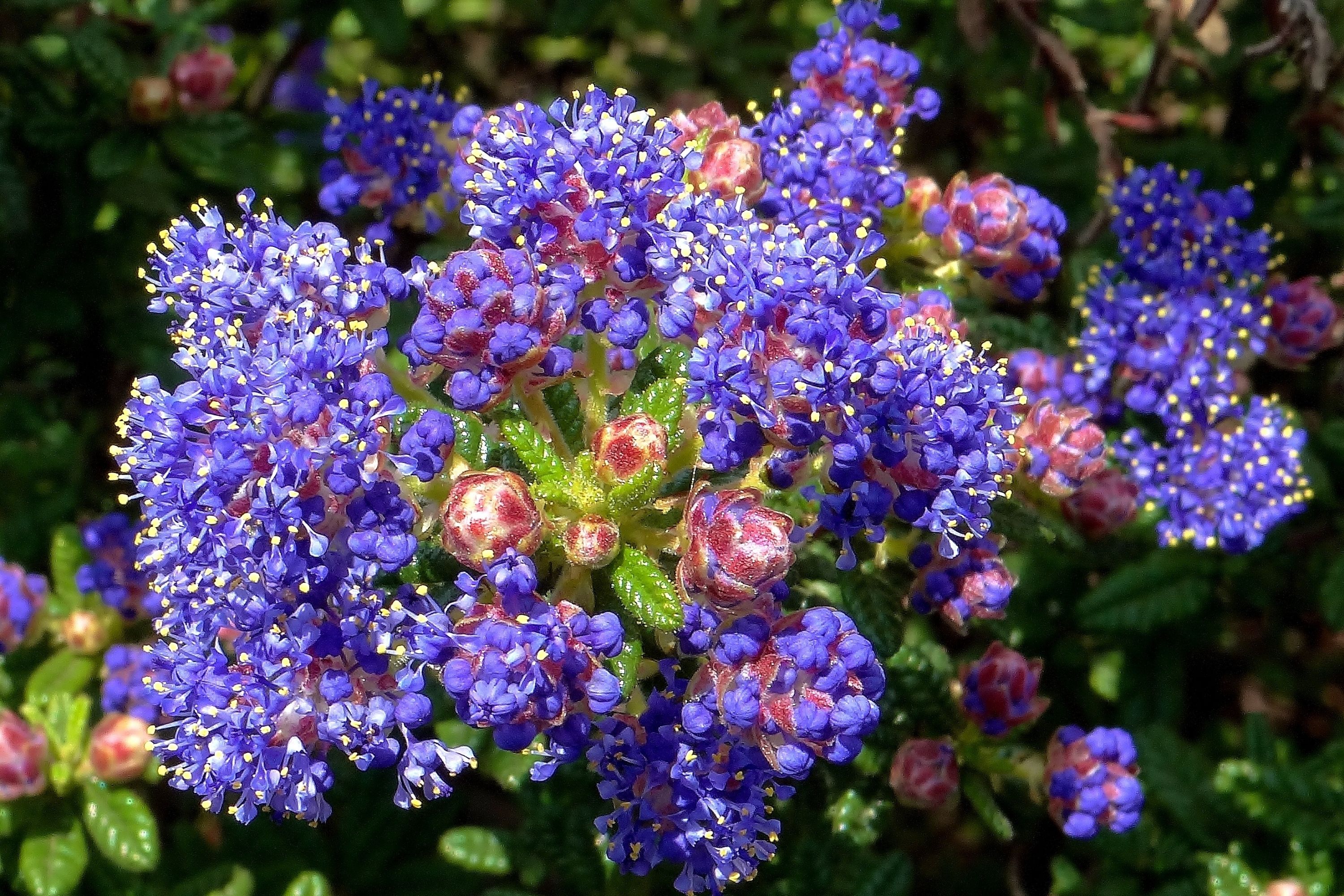Santa Barbara Ceanothus
(Ceanothus impressus)

Description
Ceanothus impressus, commonly known as Santa Barbara ceanothus or blueblossom, is a species of evergreen shrub that belongs to the genus Ceanothus in the family Rhamnaceae. It is native to California and can be found in various habitats such as chaparral, coastal sage scrub, and oak woodland. Description Ceanothus impressus is a slow-growing shrub that can reach up to 20 feet in height and spread up to 12 feet wide. It has an open and rounded form, with branches that grow upright and then arch gracefully towards the ground. The leaves are glossy and dark green, measuring 1 to 2 inches long and 0.5 to 1 inch wide. They are arranged alternately along the stems and have toothed margins. The flowers are small and blue, appearing in dense clusters from late winter to early summer. They are fragrant and attract bees, butterflies, and other pollinators. Cultivation Ceanothus impressus is a popular ornamental shrub that is grown for its attractive foliage, flowers, and overall beauty. It prefers full sun to partial shade and well-draining soil that is moderately fertile. It is drought-tolerant and can survive with little or no watering once established. It is also frost-tolerant and can withstand temperatures as low as 15°F. It is hardy in USDA zones 8 to 10. Propagation Ceanothus impressus can be propagated from seeds, cuttings, or layering. Seeds can be collected from ripe fruits in late summer and sown in the fall. They should be scarified before sowing to enhance germination. Cuttings should be taken in the summer from semi-hardwood stems and treated with rooting hormone before planting in a well-draining potting mix. Layering involves bending a low branch towards the ground and pinning it down with a stake. The branch should be wounded where it touches the ground and covered with soil to encourage rooting. After a year, the rooted branch can be separated from the mother plant and transplanted. Pests and Diseases Ceanothus impressus is generally pest and disease-resistant, but it can be affected by a few problems such as aphids, spider mites, leaf spot, and root rot. Aphids and spider mites can be controlled by spraying the plant with a strong jet of water or by using insecticidal soap. Leaf spot can be prevented by keeping the plant dry and well-ventilated. Root rot can be prevented by avoiding overwatering and ensuring good drainage. Uses Ceanothus impressus has several uses in landscaping, horticulture, and traditional medicine. It can be used as a specimen plant, hedge, screen, or mass planting. It can also be trained as a small tree or espalier. Its flowers can be used for cut flowers or dried arrangements. Its leaves and bark have been used by Native Americans for medicinal purposes such as treating colds, coughs, and skin conditions. Its wood has been used for making baskets, tools, and furniture. Conclusion Ceanothus impressus is a beautiful and versatile shrub that is well-suited to California's Mediterranean climate. Its glossy foliage, fragrant flowers, and wildlife benefits make it a valuable addition to any garden or landscape. Its ease of cultivation and resistance to pests and diseases make it a low-maintenance and sustainable choice for gardeners and landscapers. With proper care and attention, Ceanothus impressus can thrive for many years and provide enjoyment and benefits to humans and nature alike.
Taxonomic tree:







